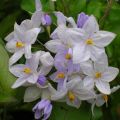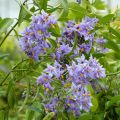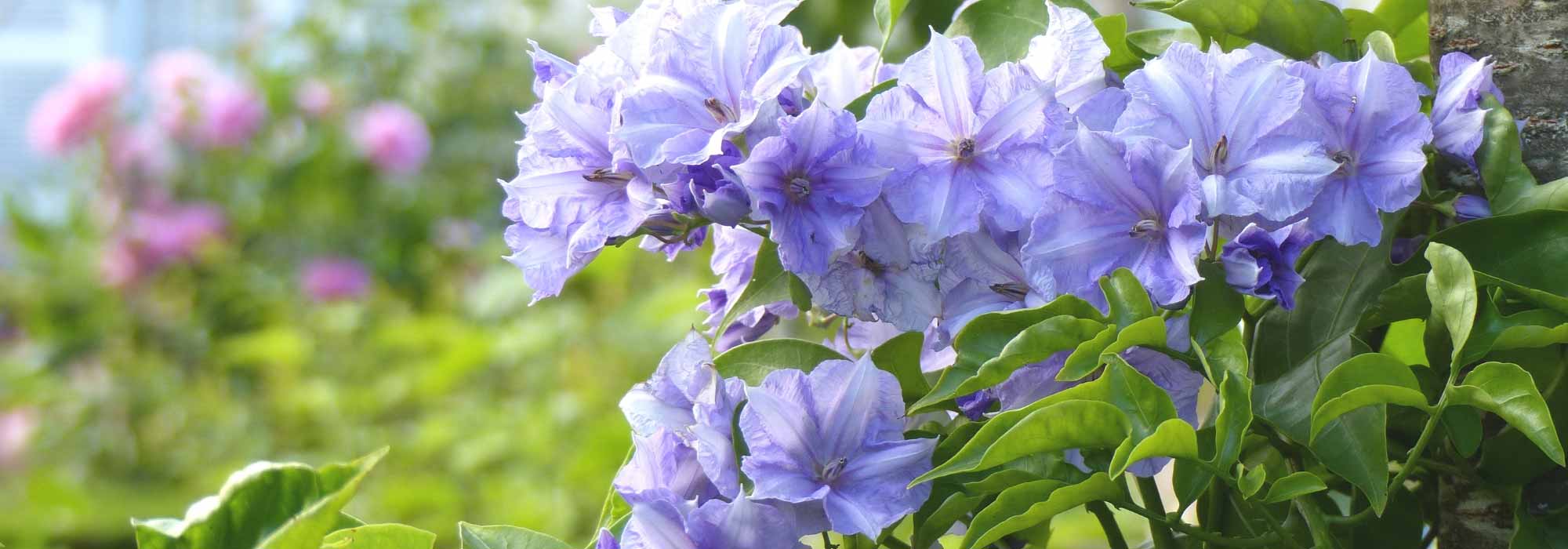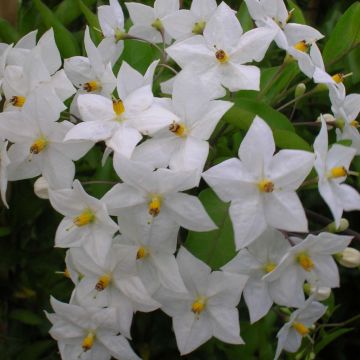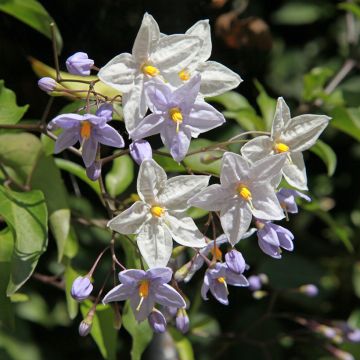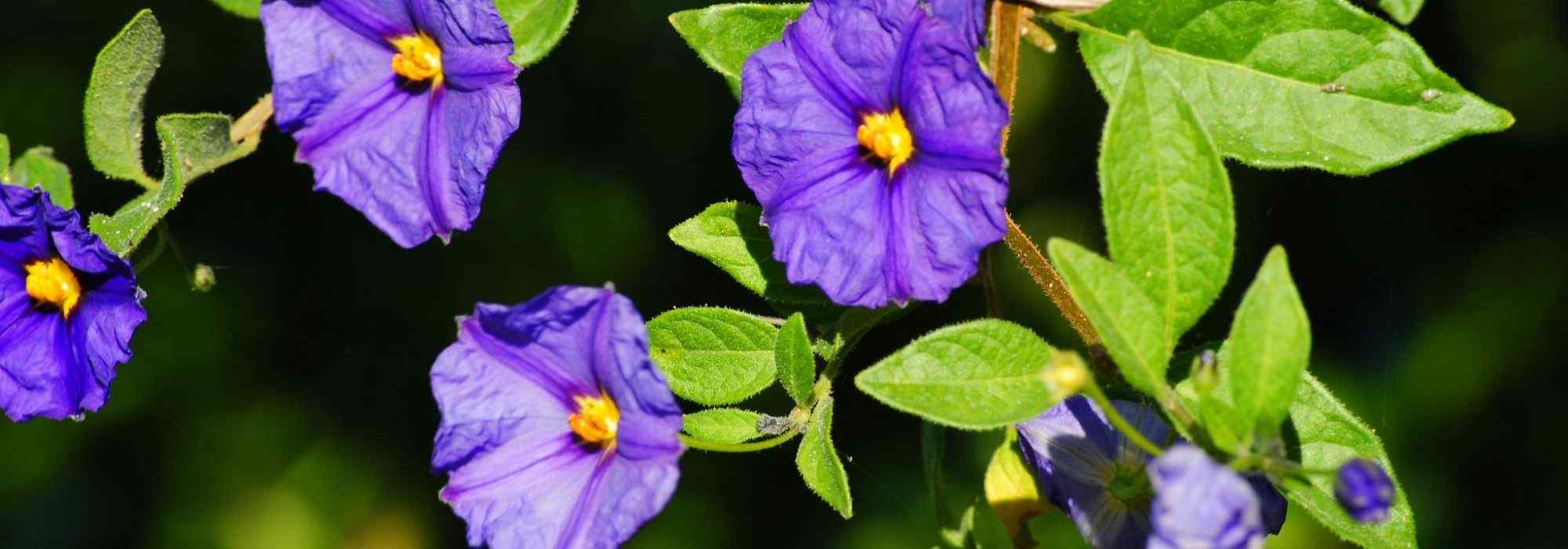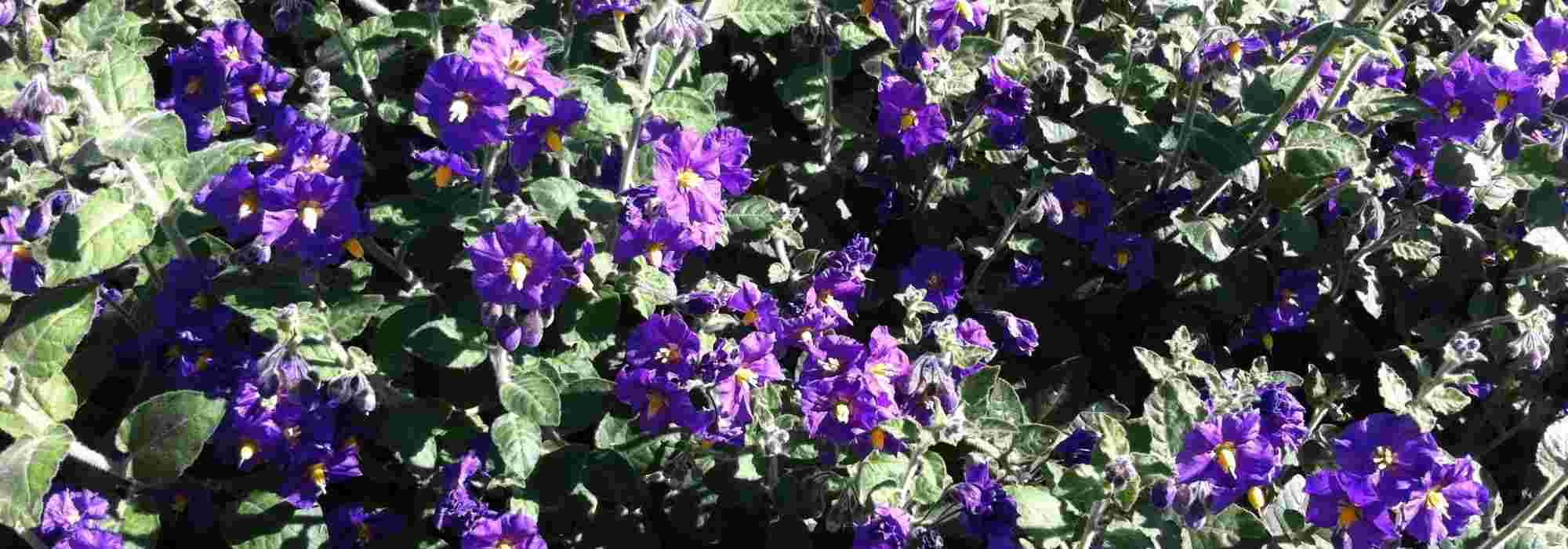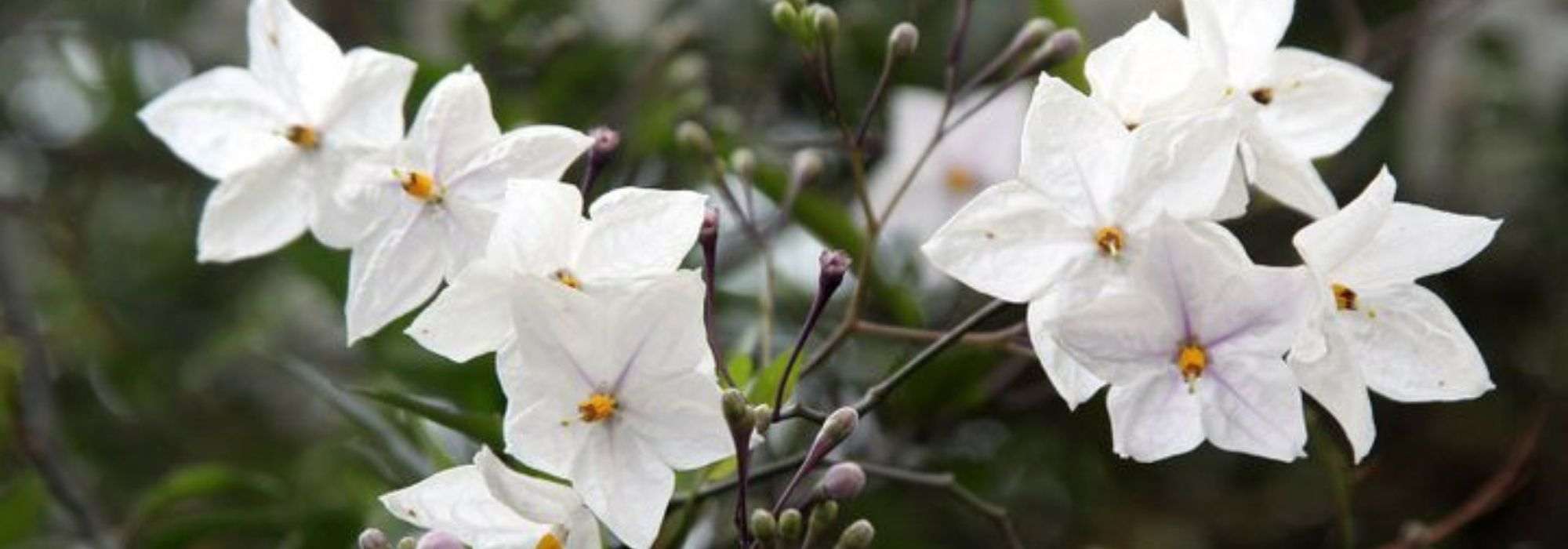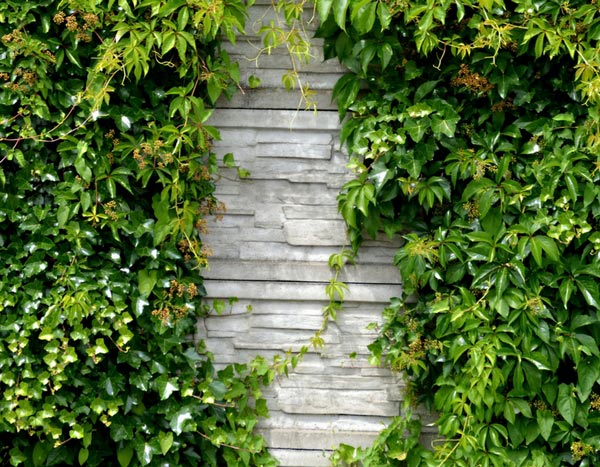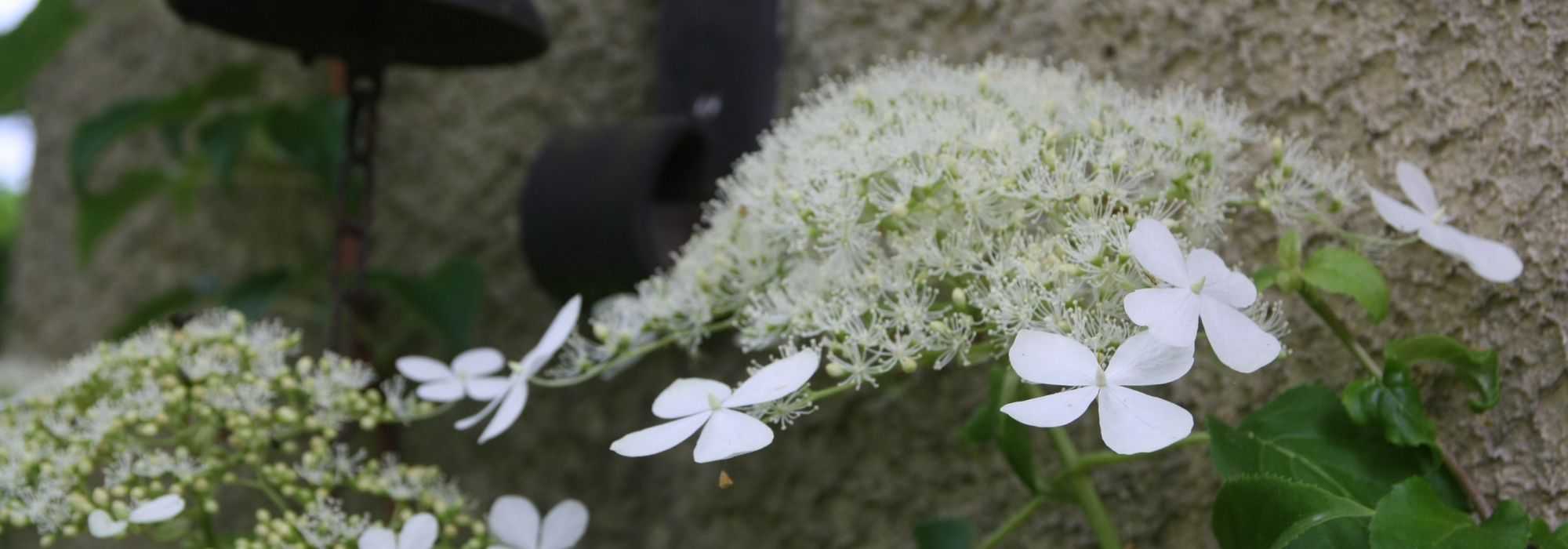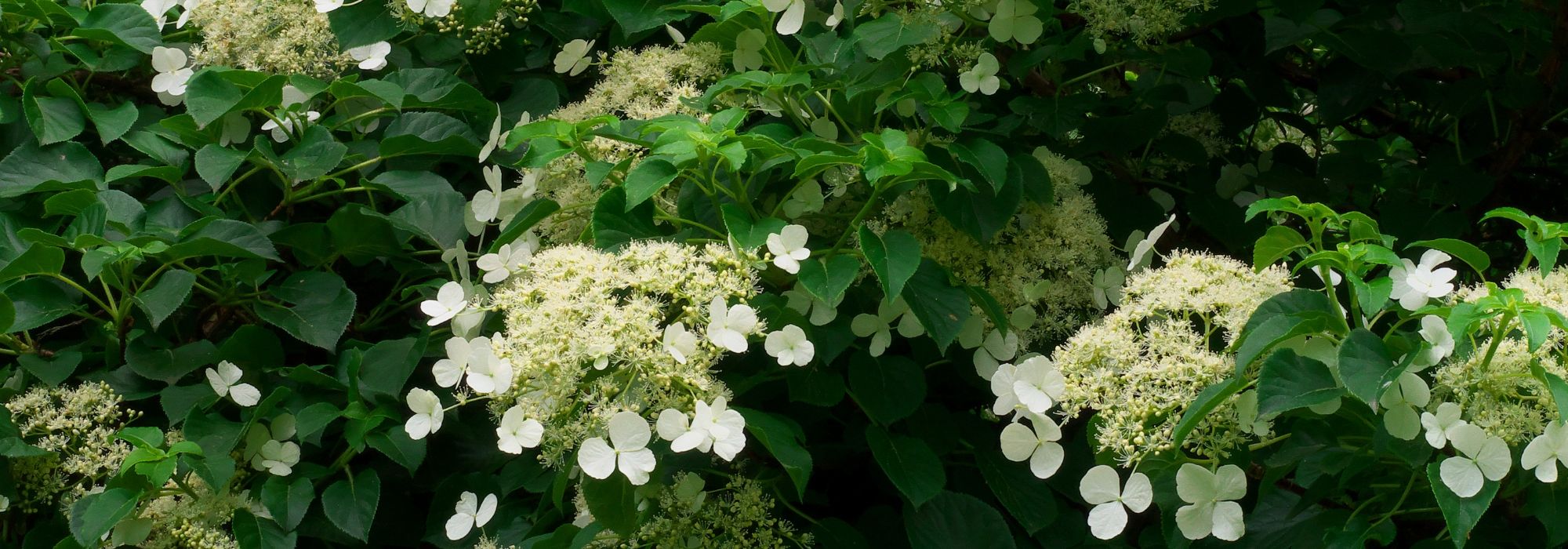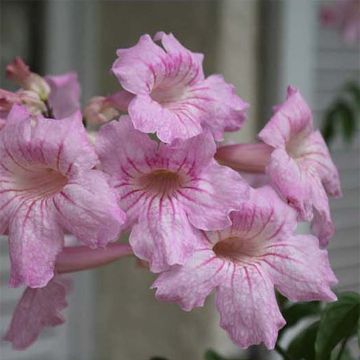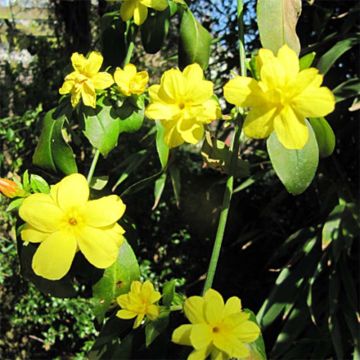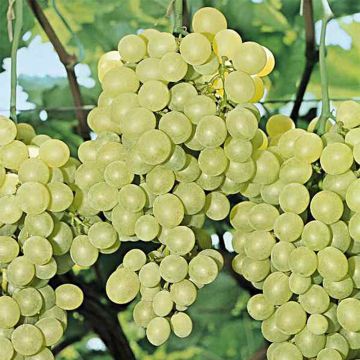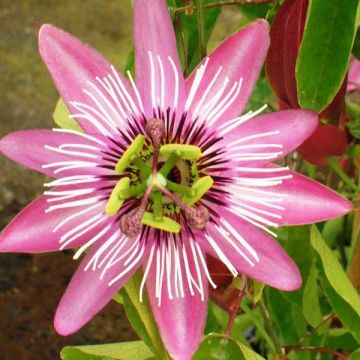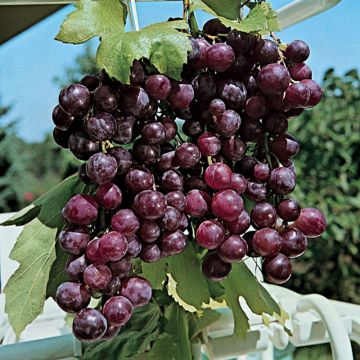

Climbing Solanum duo
Climbing Solanum duo
Solanum jasminoides, crispum Bleu, Glasnevin
Potato Vine, Jasmine Nightshade
Special offer!
Receive a €20 voucher for any order over €90 (excluding delivery costs, credit notes, and plastic-free options)!
1- Add your favorite plants to your cart.
2- Once you have reached €90, confirm your order (you can even choose the delivery date!).
3- As soon as your order is shipped, you will receive an email containing your voucher code, valid for 3 months (90 days).
Your voucher is unique and can only be used once, for any order with a minimum value of €20, excluding delivery costs.
Can be combined with other current offers, non-divisible and non-refundable.
Home or relay delivery (depending on size and destination)
Schedule delivery date,
and select date in basket
This plant carries a 6 months recovery warranty
More information
We guarantee the quality of our plants for a full growing cycle, and will replace at our expense any plant that fails to recover under normal climatic and planting conditions.
Would this plant suit my garden?
Set up your Plantfit profile →
Collection items (2 plants)
Description
This Duo of Solanum brings together two superb climbing varieties, Solanum jasminoides 'Blue' and Solanum crispum 'Glasnevin'. Graceful, generous climbers, which both produce numerous clusters of small star-shaped, fragrant flowers from June until the first frost on elegant foliage that persists in winter under mild climates. Nightshades are quite sensitive to cold and prefer heat, sun, and long summers. In open ground in coastal gardens, they tolerate drought quite well. These climbing plants can also be grown in containers, which allows them to be protected from the cold in less favourable climates.
This duo consists of:
1 x False Jasmine Nightshade 'Bleu': a woody climbing plant with very rapid growth that can reach a height of 5m and a spread of 1m in open ground, much less in a pot. Its twining stems wrap around a support provided for them and are capable of clinging to rough walls. The flowering lasts several months and consists of small paniculate star-shaped flowers, 2cm in diameter, light mauve blue with a centre of thick bright yellow stamens. They are slightly fragrant and followed by small toxic purple berries like all fruits of the nightshade family.
1 x Glasnevin Crisped Nightshade: originating from Brazil, this plant develops long, flexible, almost twining branches that can easily be trained. In open ground, they reach a length of 5m. Its star-shaped flowers are fragrant, mauve with a yellow centre, grouped in loose clusters. After flowering, very decorative but toxic, white-yellow fruits appear.
The Solanum in this duo climb trellises, arches, pergolas, stair railings, or balconies. Their cold resistance is around -9°C at its lowest for a mature and well-exposed plant. They can be cultivated in open ground in Mediterranean or oceanic gardens without severe frosts. Plant in spring, in rich and well-drained soil, kept slightly moist. To establish in open ground, water regularly and generously in the first year. Plants grown in pots will need regular watering and fertiliser for flowering shrubs between May and August. Watering should be reduced in winter. Plan for one plant per square metre or one plant in a 30-litre pot. The above-ground parts die as soon as temperatures reach -2 or -3°C. Plants in pots should be brought indoors to protect them from frost in October and taken out again in spring, after the frosts.
To accompany your False Jasmine Nightshades, consider Mexican Orange Blossoms, Tree Mallows, or prostrate Ceanothus... Their voluble branches will also intertwine with those of clematis, morning glories or Sollya heterophylla in mild climates. You can let them grow to form a large, bushy ground cover in a slightly wild area of the garden.
Plant habit
Flowering
Foliage
Botanical data
Solanum
jasminoides, crispum
Bleu, Glasnevin
Solanaceae
Potato Vine, Jasmine Nightshade
Cultivar or hybrid
Other Solanum
View all →Planting and care
You can plant your Solanum in open ground or in pots in a sunny position. These plants are not very hardy but can nevertheless thrive further north in a very sheltered location. If you plant them in open ground, wait until harsh frosts have passed (they tolerate not too severe frost, not dropping below -9°C). In the meantime, you can grow them in pots in a warm and bright place to accelerate their growth. Plant your Solanum in a sunny exposure. These climbers need well-drained soil, not too wet, and appreciate an organic fertiliser when planting and then regularly during growth in poor soil. In open ground, they only require occasional watering in summer to support flowering. Solanum is undemanding on the nature of the soil, it tolerates the presence of limestone quite well. However, it prefers fertile and deep soils. In pots, it must be watered regularly and benefit from very frequent fertiliser. Provide it with support to cling to (grille, trellis, wire...), large enough to accompany its rapid growth. On a wall, training is necessary. Fix hooks on the wall and stretch wires horizontally, every 50 cm, on which to guide the stems. In slightly cold regions, take care to protect the crown and the base of the plant with a thick mulch and a winter fleece.
In late winter, if the stems have been affected by frost, prune them to 30 cm from the ground and new stems will emerge from the crown. Regular pruning throughout the year is necessary to maintain a well-ordered appearance for your Solanum.
Diseases and pests: no known pathogenic agents or pests except for red spider mites that can develop in hot and dry situations, with insufficient ventilation.
Planting period
Intended location
Care
Planting & care advice
This item has not been reviewed yet - be the first to leave a review about it.
Similar products
Haven't found what you were looking for?
Hardiness is the lowest winter temperature a plant can endure without suffering serious damage or even dying. However, hardiness is affected by location (a sheltered area, such as a patio), protection (winter cover) and soil type (hardiness is improved by well-drained soil).

Photo Sharing Terms & Conditions
In order to encourage gardeners to interact and share their experiences, Promesse de fleurs offers various media enabling content to be uploaded onto its Site - in particular via the ‘Photo sharing’ module.
The User agrees to refrain from:
- Posting any content that is illegal, prejudicial, insulting, racist, inciteful to hatred, revisionist, contrary to public decency, that infringes on privacy or on the privacy rights of third parties, in particular the publicity rights of persons and goods, intellectual property rights, or the right to privacy.
- Submitting content on behalf of a third party;
- Impersonate the identity of a third party and/or publish any personal information about a third party;
In general, the User undertakes to refrain from any unethical behaviour.
All Content (in particular text, comments, files, images, photos, videos, creative works, etc.), which may be subject to property or intellectual property rights, image or other private rights, shall remain the property of the User, subject to the limited rights granted by the terms of the licence granted by Promesse de fleurs as stated below. Users are at liberty to publish or not to publish such Content on the Site, notably via the ‘Photo Sharing’ facility, and accept that this Content shall be made public and freely accessible, notably on the Internet.
Users further acknowledge, undertake to have ,and guarantee that they hold all necessary rights and permissions to publish such material on the Site, in particular with regard to the legislation in force pertaining to any privacy, property, intellectual property, image, or contractual rights, or rights of any other nature. By publishing such Content on the Site, Users acknowledge accepting full liability as publishers of the Content within the meaning of the law, and grant Promesse de fleurs, free of charge, an inclusive, worldwide licence for the said Content for the entire duration of its publication, including all reproduction, representation, up/downloading, displaying, performing, transmission, and storage rights.
Users also grant permission for their name to be linked to the Content and accept that this link may not always be made available.
By engaging in posting material, Users consent to their Content becoming automatically accessible on the Internet, in particular on other sites and/or blogs and/or web pages of the Promesse de fleurs site, including in particular social pages and the Promesse de fleurs catalogue.
Users may secure the removal of entrusted content free of charge by issuing a simple request via our contact form.
The flowering period indicated on our website applies to countries and regions located in USDA zone 8 (France, the United Kingdom, Ireland, the Netherlands, etc.)
It will vary according to where you live:
- In zones 9 to 10 (Italy, Spain, Greece, etc.), flowering will occur about 2 to 4 weeks earlier.
- In zones 6 to 7 (Germany, Poland, Slovenia, and lower mountainous regions), flowering will be delayed by 2 to 3 weeks.
- In zone 5 (Central Europe, Scandinavia), blooming will be delayed by 3 to 5 weeks.
In temperate climates, pruning of spring-flowering shrubs (forsythia, spireas, etc.) should be done just after flowering.
Pruning of summer-flowering shrubs (Indian Lilac, Perovskia, etc.) can be done in winter or spring.
In cold regions as well as with frost-sensitive plants, avoid pruning too early when severe frosts may still occur.
The planting period indicated on our website applies to countries and regions located in USDA zone 8 (France, United Kingdom, Ireland, Netherlands).
It will vary according to where you live:
- In Mediterranean zones (Marseille, Madrid, Milan, etc.), autumn and winter are the best planting periods.
- In continental zones (Strasbourg, Munich, Vienna, etc.), delay planting by 2 to 3 weeks in spring and bring it forward by 2 to 4 weeks in autumn.
- In mountainous regions (the Alps, Pyrenees, Carpathians, etc.), it is best to plant in late spring (May-June) or late summer (August-September).
The harvesting period indicated on our website applies to countries and regions in USDA zone 8 (France, England, Ireland, the Netherlands).
In colder areas (Scandinavia, Poland, Austria...) fruit and vegetable harvests are likely to be delayed by 3-4 weeks.
In warmer areas (Italy, Spain, Greece, etc.), harvesting will probably take place earlier, depending on weather conditions.
The sowing periods indicated on our website apply to countries and regions within USDA Zone 8 (France, UK, Ireland, Netherlands).
In colder areas (Scandinavia, Poland, Austria...), delay any outdoor sowing by 3-4 weeks, or sow under glass.
In warmer climes (Italy, Spain, Greece, etc.), bring outdoor sowing forward by a few weeks.






























